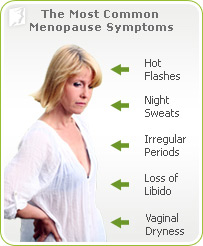Menopause Symptoms
As women enter their 40s and 50s, there are a number of changes going on within their bodies. Each woman will experience a different menopause, but becoming knowledgeable about the signs, symptoms, and treatment options is the first step to ensuring that you manage your menopause — rather than it managing you. Your “survival kit” is knowledge paired with action.
Knowledge: Some symptoms that may be a part of your menopause include: Hot flashes; rapid heartbeat; irritability, mood swings, sudden bouts of crying; trouble sleeping loss of libido; crashing fatigue; incontinence; breast tenderness; depression; weight gain; hair loss (or thinning); and increased facial hair.
Knowledge:
The phases of menopause include:
- Perimenopause: This is the time leading up to menopause when your body begins producing less of hormones like estrogen and progesterone. As a result, women begin to lose their ability to become pregnant. Symptoms may begin as early as 35, but often begin between 45 and 55.
- Menopause: Your period stops and perimenopause symptoms may increase. Menopause is defined as 12 consecutive months without a period (and there are no other causes).
- Post-menopause: Most of the menopausal changes have faded. Hot flashes may seem milder or less frequent; energy and emotional levels may seem to have stabilized. Bone loss and estrogen loss are areas of concern.
Action:
- Relieve the symptoms by keeping a journal to record changes and anticipate changes. Watch for food triggers like spicy foods or heavier meals.
- Dress in layers so you can easily cool down if a hot flash attacks.
- Focus on your health and improve where you can — stop smoking, start exercising.
- Some alternative therapies, such as acupuncture, may have results for some women.
- Counseling or support groups are an option for women struggling with the changes in their bodies and the associated lifestyle changes.
- Hormone replacement therapy (HRT) can be discussed with your physician if more moderate changes in diet, exercise, and supplements do not offer the level of treatment desired.

